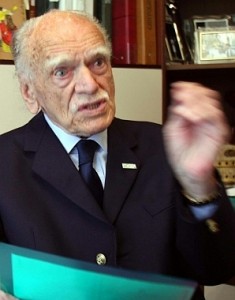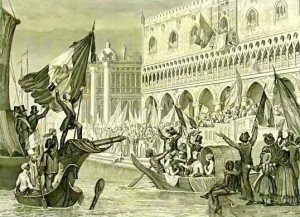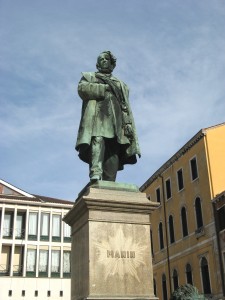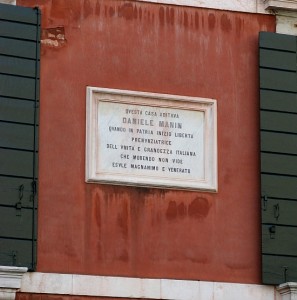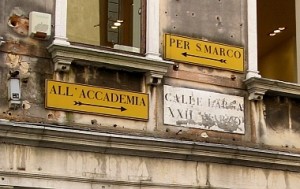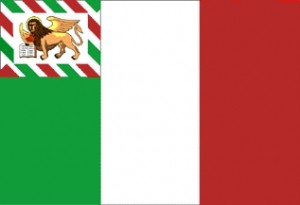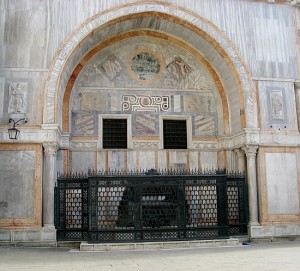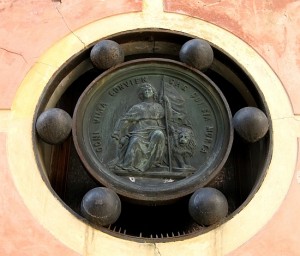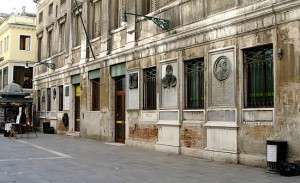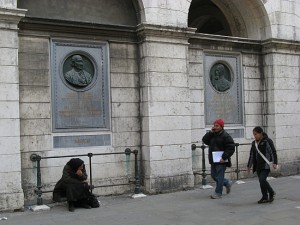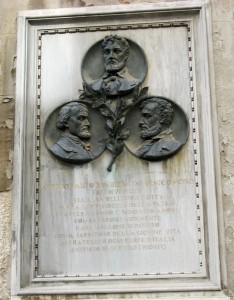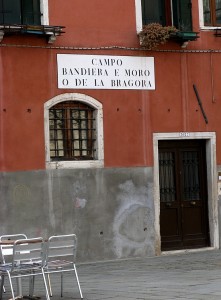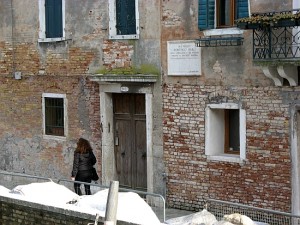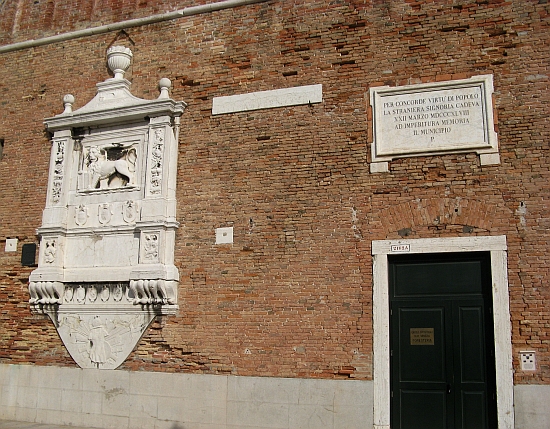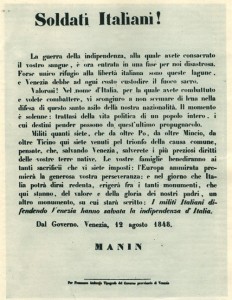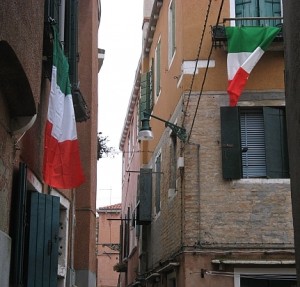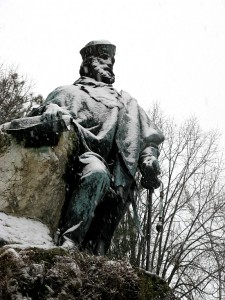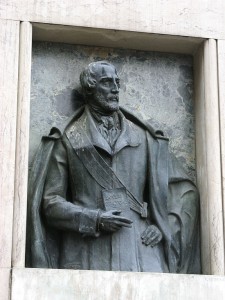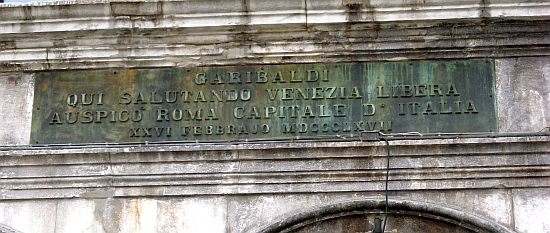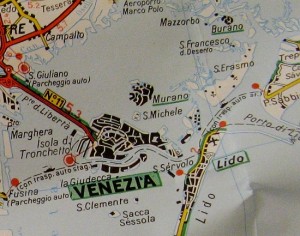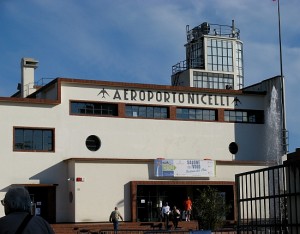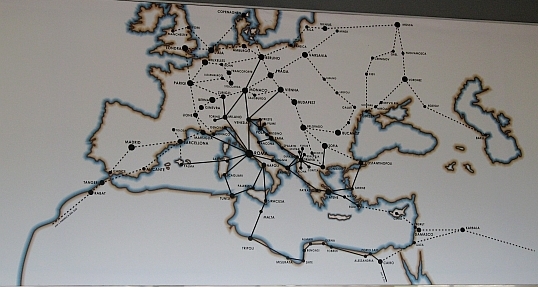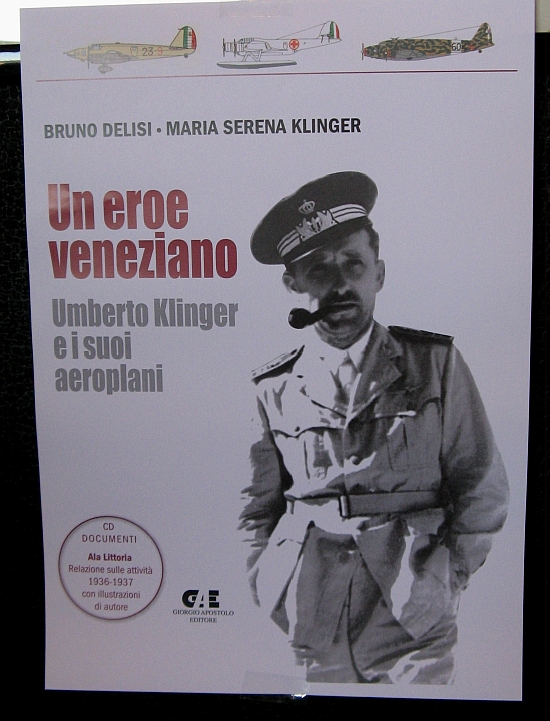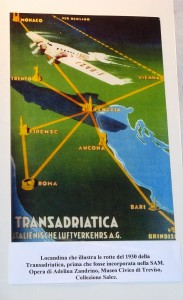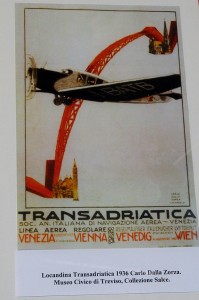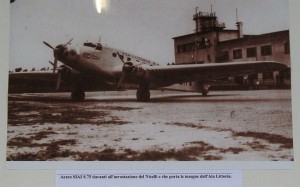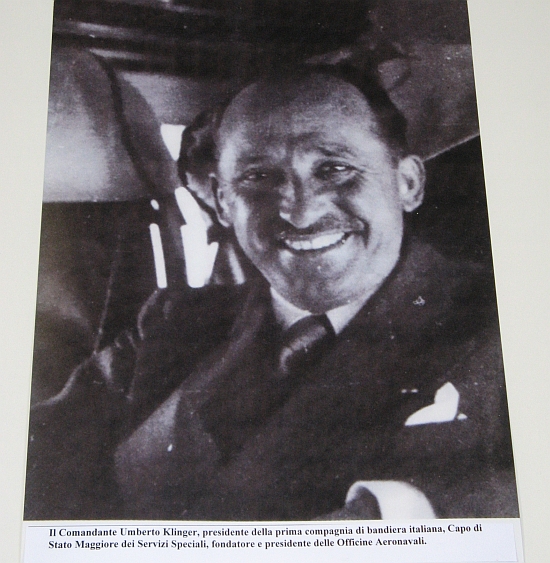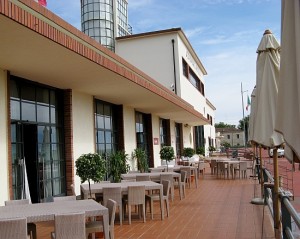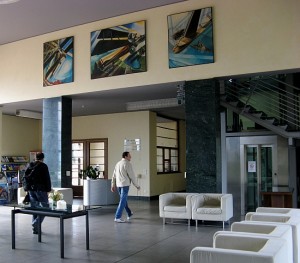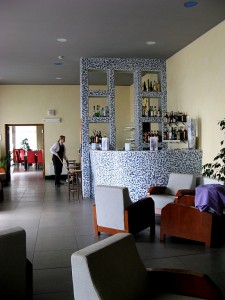The other afternoon, as I was lolling on the embankment of our rowing club lightly toasting my skin and reflecting on how monotonous the sound of the surf was, surf caused by the incessant passing of every conceivable type of motorized boat, I noticed something unusual.
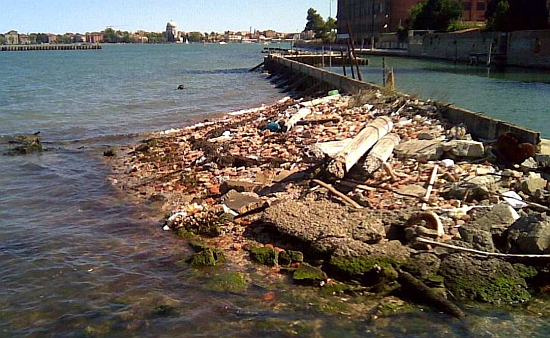
Just a few yards away is a mass of rocks, sand, bricks and other detritus which over time have created a small sort of beach, and on it there was something alive. Well, it had been alive, in the sense that its flowers were only slowly fading. But while it’s not all that strange to find a vaporetto route sign (the kind they hang on the side of the boat to list the stops) floating in the lagoon, I’d never seen a funeral wreath before.
Naturally, the vision of a floating funeral wreath inspired a backwash of mournful thoughts, loaded with other bits of detritus from all those somber poems and short stories they make you read in school. But then I became curious.
Why would a wreath be floating in the lagoon? It should have been removed from the casket and left at the cemetery. Did it fly off the hearse (naturally, a motorboat) on its way to eternity? Did a person or persons deliberately cast it upon the waves, in an uncharacteristically romantic gesture to the recently departed? These wreaths cost real money. Who would have spent all that for a wreath that was going to have a shorter life than the funeral leftovers?
I went to discuss all this with Lino, and when he came over to investigate, we saw that the waves had pulled the wreath away from its temporary resting-place and had drawn it seaward, right into the center of the straps attached to the crane which puts our boats into the water.

We took the boathook and pulled the dedicatory ribbon around to where we could read it. It said: “CIAO CAPITANO.” Goodbye, Captain.
I’ll spare you my next batch of thoughts (gone down with the ship? Lost at sea?). Lino had a better theory.
Just a few days ago, a man named Anacleto Marella died. His funeral was held on June 20 (Saturday) at the church of San Francesco della Vigna, roughly just around the corner from our club. So this must have been borne by the tide from there.
Marella had been employed for years as one of the many “captains” of the ACTV, the public transport company — a vaporetto driver, in other words.
But don’t imagine that they all get wreaths, floating or otherwise.
Some investigation has revealed that Capt. Marella was hugely famous, an extraordinary person who had been deeply involved for decades in the struggle to help the handicapped. Specfically, those suffering from muscular dystrophy. And he was one of the driving forces, along with Dr. Diego Fontanari and Mrs. Luciana Sullam, in the founding of the local chapter of the UILDM, the Unione Italiana lotta alla Distrofia Muscolare (Italian Union in the fight against Muscular Dystrophy).
According to the story published in the newsletter of the association, back in 1966 or so, Marella noticed that every day at a certain time, a young man with muscular dystrophy boarded, with tremendous effort, his vaporetto. Struck by the man’s tenacity and courage, he began to urge the bus company (as I think of it) to improve its accessibility to the handicapped, particularly by creating specific spaces designed for wheelchairs. This was revolutionary work, especially when you consider the cost of retrofitting all those vehicles. Did I mention that the transport company is public? That means it was born to say “We can’t afford it.” But Marella seems to have been born, as his grandson once remarked, with “Duracell batteries.”
He didn’t stop with the vaporettos. He organized a medical conference on neuromuscular diseases. He raised funds by participating in telethons. He accompanied groups of tourists with MS in tours around the city, not to mention on trips out in the lagoon.
He even convinced the 66 other vaporetto drivers to donate part of every paycheck to the UILDM. In fact, they still do. I want you to stop and think about that for a minute. Yes, it is unbelievable. But there it is.

Small digression: When I first came here, and for years, the vaporettos all displayed several discreet but noticeable square stickers with a design of a person in a wheelchair, with a small note encouraging the public to remember the UILDM and its mission. I used to wonder, “Why MS? If the public transport company is publicizing one disease, why not all of them?” Now I know the answer. Because Anacleto Marella asked them to, and it was nobody could say no to him.
“My father’s enthusiasm and tenacity overwhelmed everybody,” his son, Giovanni, remembered. “He involved entire families in his initiatives. Nobody could stop him.”
Yes, he was left fatherless as a boy, and had to start working early to support his family. Yes, he was a wounded veteran of World War II. But these experiences don’t inevitably make pioneers, much less heroes, nor do they guarantee any skill in navigating the immense sea of bureaucracy and lethargy. As far as I can tell, he had no relatives with any physical disabilities. What he clearly had was a large heart, a clear mind, and a spectacularly hard head.
He would have been 94 on July 1. Ciao, Capitano. If you had ever wanted to round Cape Horn with your vaporetto, I’ll bet you could have gotten everybody to sign up.

